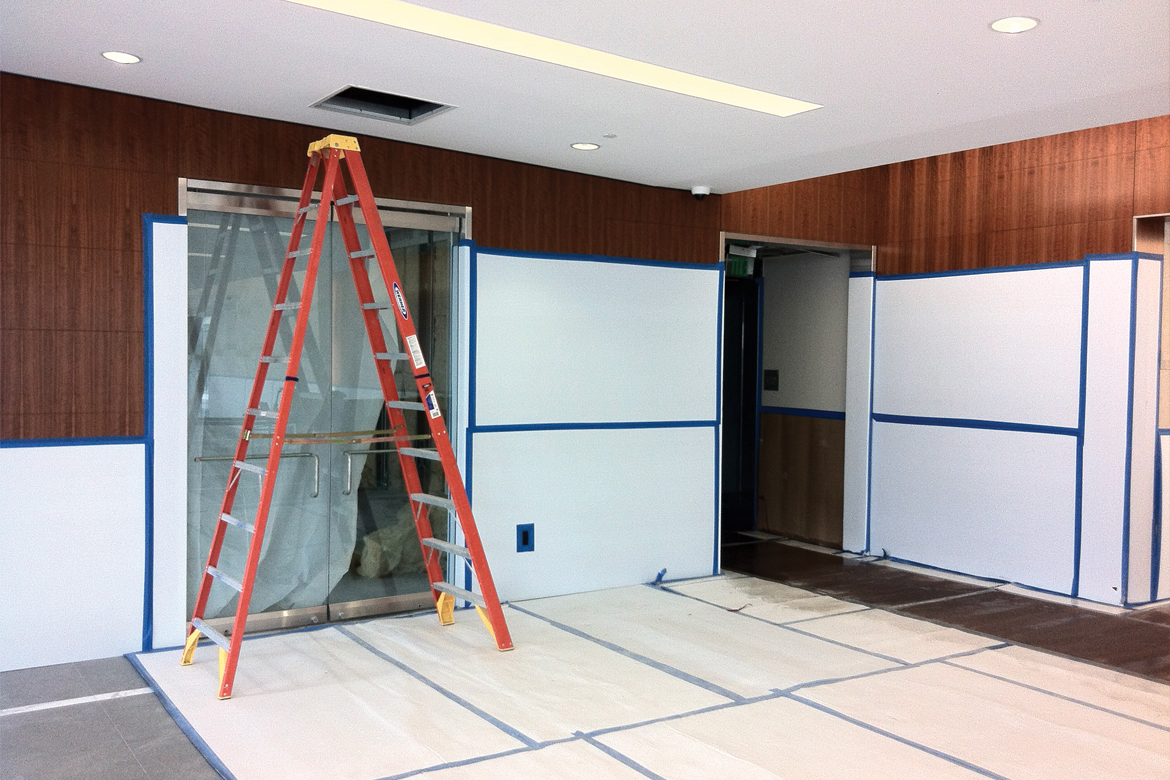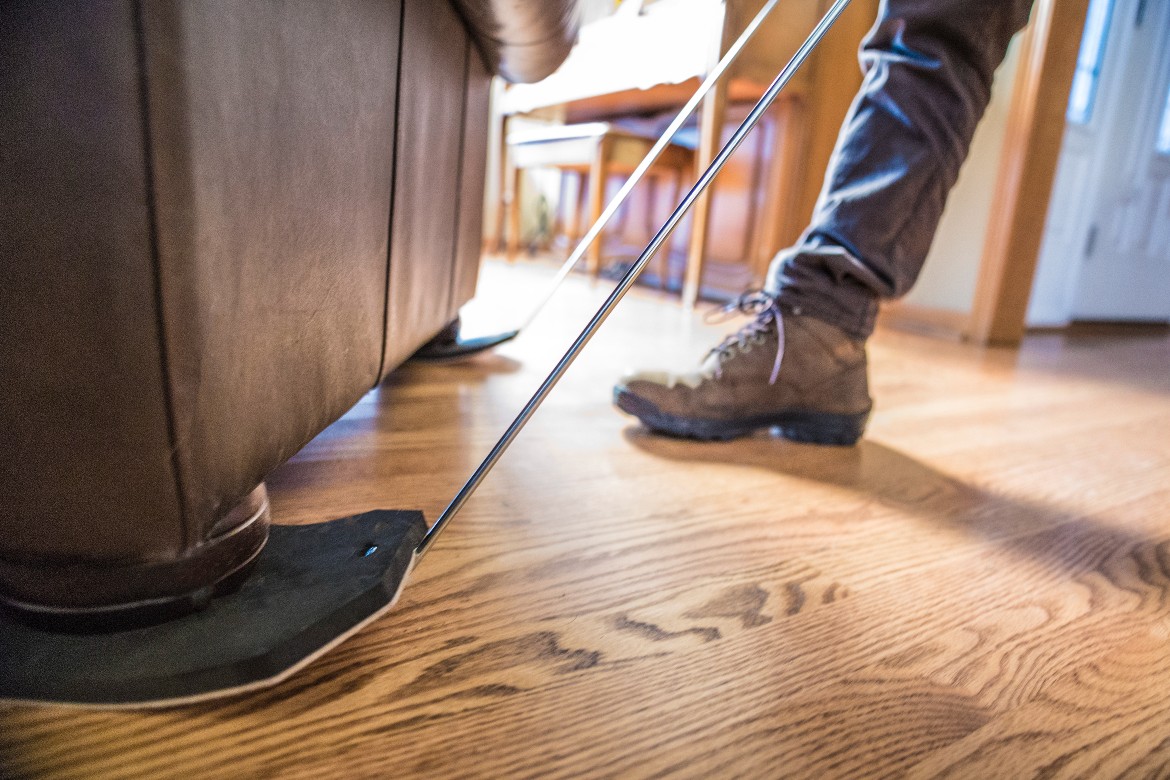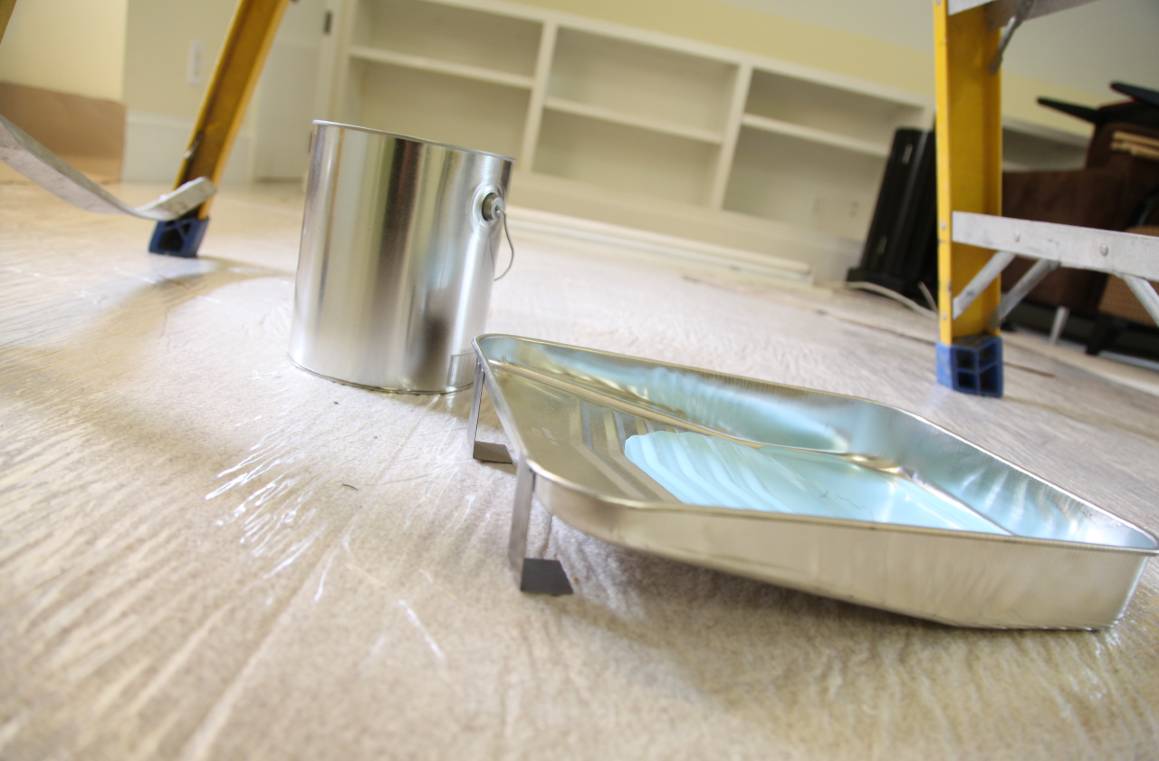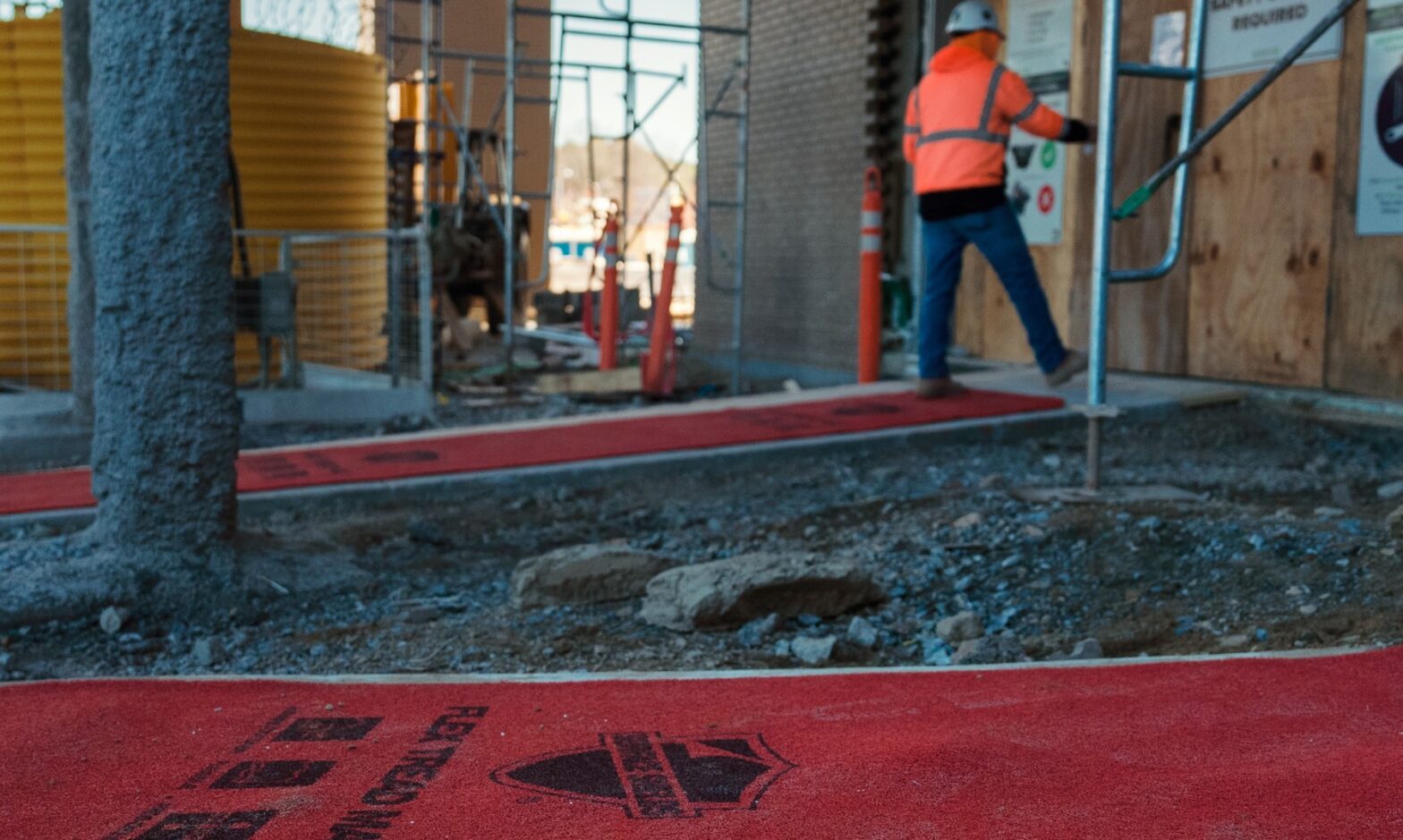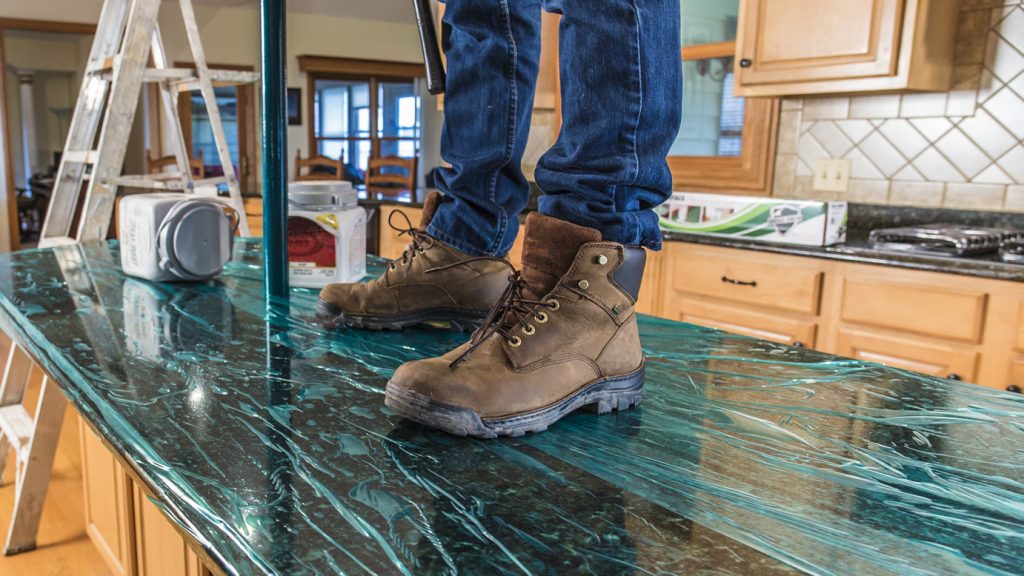Whether you’re a contractor on a job site, a DIYer remodeling an existing space like a bathroom or kitchen, or a mover hired to safely transport furniture and other belongings, surface protection is crucial.
From hardwood floors, tile, and carpet, to windows, doors, and countertops, the surfaces in a home or office building are at risk of dents, stains, and scratches. Fortunately, there are a variety of surface protection products you can utilize to safeguard these surfaces.
How to Protect Floors and Carpets with Temporary Surface Protection
Do: Cover floors with a protective floor guard
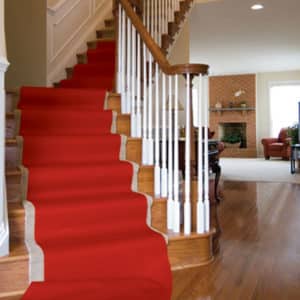
One of the most effective ways to protect floors during construction or moving is to cover them. Depending on the project, you can protect hardwood floors, tile, concrete, and other flooring with a number of floor protection products.
Drop cloths are efficient at protecting floors from paint spills and drywall dust. Builder’s paper and kraft paper are great for lighter applications, while neoprene floor runners, paperboard protection, and plastic sheets are designed to withstand drops from tools and heavy foot traffic.
Protect carpets from dirt, debris, and paint with carpet protection film. It’s easy to apply, and resists punctures, so dirt and liquids have nowhere to go.
Do: Cover your shoes
An easy way to prevent dirt and other contaminants from damaging your floors is to cover your shoes with easy, reusable, slip-on shoe covers. You can put them on before entering a house and remove them each time you leave, so you’re never tracking in any dirt or debris.
Sticky mats are also a great way to prevent tracked-in dirt. Place a tacky mat at an entryway, and it will grab dirt from the bottom of your shoes before you enter.
Don’t: Lay floor protection down before cleaning
It’s important to clean the floors before laying floor protection down. Dirt and debris trapped under the surface protection can cause scratches to the floor’s surface. Make sure to vacuum or sweep up any dirt before placing a surface protection product. Mop the surface if necessary and let it completely dry before installing your surface protection.
Surface Shields Product Recommendations
- Kraft Shield: Surface Shields’ Kraft Paper provides reliable defense against light foot traffic, spills, dust, and dirt. It serves as an excellent substitute for the traditional red rosin paper and finds extensive use across construction, remodeling, drywall, and industrial sectors.
- Neo Shield: Neo Shield is a tough neoprene mat built for heavy-duty use. It’s a reusable protector that defends surfaces against high-impact drops, spills, and foot traffic. With a non-slip backing, these rolls are user-friendly, lightweight, and lay flat for effortless application.
- Carpet Shield: Carpet Shield is a film crafted for safeguarding most carpet types for a span of 30 days. This temporary floor protection is resistant to tears and punctures. Its self-adhering nature makes it perfect for the construction, remodeling, and moving industries.
- Shoe Covers: Keep your floors and footwear safe with Surface Shields’ shoe covers. These blue boot covers, tailored for construction use, are lightweight and breathable. Designed with an elastic ankle, they accommodate most shoe sizes.
- Step N Peel Sticky Mats: These hard surface dirt removal mats are typically positioned at entryways of job sites or dust containment enclosures. The tacky film effectively removes dust and dirt, preventing debris from spreading during building or remodeling projects. Available in 30 or 60 tabbed sheets for easy removal, these sticky mats come with a durable, reusable frame that securely holds them in place.
Tips for Window and Door Protection
Do: Remove the door
The best way to avoid damaging a door during construction or a move is to remove it from the hinges. Once removed, you no longer have to worry about scratching the door while moving bulky furniture or hitting it accidentally with a ladder. Place the door in a safe place, away from the activity, and cover it with a drop cloth or blanket.
Do: Cover the window with a window protection film
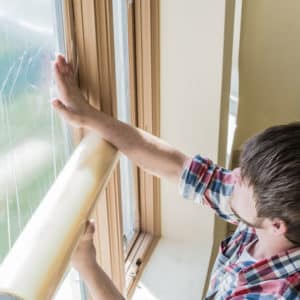
Replacing a window is the last thing you want to do during a construction or remodel project. Not only is it time and money wasted (windows are NOT cheap), but that damage can be easily avoided. Using a self-adhesive window film can reduce the risk of scratches, paint drips, and overspray. If you’re working outside, window protection film can protect from stucco, mortar stains, and more.
Using a blue masking tape, you can also tape an “x” over large sliding glass or french doors. This will make them more visible to people working, which means they will be less likely to be walked into while carrying tools and accidentally broken.
Do: Use door jamb protection
Door jamb protectors are specially designed to protect the door frames from damage during construction. They are an effective way to protect door jambs from scratches and dents. Many door frame protectors are made out of a flexible paper material that can easily pop on and off the door jamb as needed.
Don’t: Leave a door uncovered
Sometimes, removing the door from the hinge just isn’t possible. If you can’t take the door off, make sure to cover it with cardboard to protect it from dents and scratches or kraft paper to protect it from paint overspray.
Surface Shields Product Recommendations
- Window Shield: Window Shield serves as a protective film guarding against mortar stains, stucco, overspray, and similar elements. This protective window film can stay on surfaces for up to 45 days without leaving any residue. It adheres easily and is perfect for windows and glass, coming in different size options.
- Entry Shield: Entry Shield offers door jamb protection for work environments. This sturdy paperboard door jamb is built to withstand dents and scratches in high-traffic entryways.
How to Protect Countertops and Cabinets
Do: Cover countertops with a protective material
Countertops can see a lot of action during construction and remodeling projects. They can be used as a place to set tools and equipment or as a platform to stand on to reach the ceiling. Avoid chips, scratches, and spilled paint by using a drapable, slip-resistant drop cloth, poly sheet, or countertop film surface protection product.
Do: Cover cabinets and protect corners
Protect your cabinets from paint and dust by taping a lightweight plastic sheet over them. You can go a step further and use a protective corner guard on the corners of your cabinets to protect them from accidental damage from tools and equipment.
Don’t: Leave the protective film on too long
Manufacturers often have a recommended duration that protective films can be left on without leaving a residue. Make sure to follow instructions, remove the film, and reapply if necessary. This goes for carpet and window film, too!
Surface Shields Product Recommendations
- Multi Shield: This temporary protector is lightweight, breathable, and offers resistance against impacts and slips. Its lightly tacky backing adheres easily to diverse surfaces, repositions effortlessly, and leaves no residue behind. The durable top layer is resistant to leaks, tears, and wear.
- Corner Guard: Corner Shield is made from sturdy fluted corrugated plastic, specifically crafted to safeguard corners, counters, doors, jambs, sills, cabinets, and other edges on the job site. Its sealed edges guarantee top-notch impact resistance and durability. These corner guards are lightweight, simple to cut, reusable, and recyclable.
Don’t Let Damage Derail Your Project
Using the right surface protection products can mean the difference between a successful move, construction, or remodeling project and a growing list of repairs and expenses. Don’t let easily avoidable damage derail you. Proactively protect surfaces with products such as heavy duty paper board, door frame protectors, neoprene runners and utilize carpet sliders before you begin your project. For a full list of surface protection products Surface Shields offers, view our catalog.

